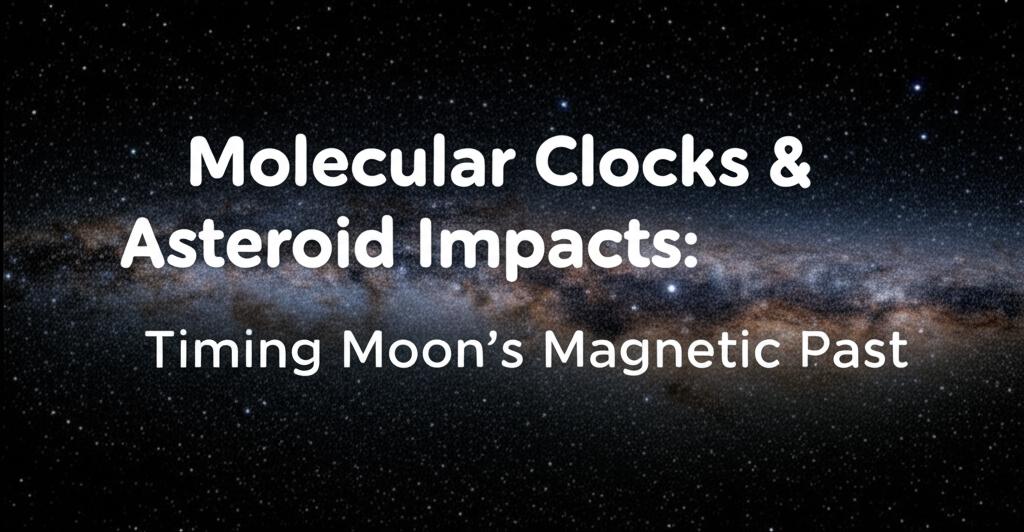The Moon, a silent sentinel in our night sky, holds a magnetic memory that scientists are diligently working to unravel. Understanding the timeline of the Moon's ancient magnetic field, and the forces that shaped it, offers a glimpse into the early, chaotic history of our solar system. Recent research highlights the crucial interplay between asteroid impacts and the Moon's own geologic processes in generating and recording this now-vanished magnetic past.
While the Moon currently lacks a global magnetic field like Earth's, evidence from Apollo-era lunar rock samples and data from orbiting spacecraft reveal that parts of the lunar surface, particularly on the far side, possess surprisingly strong magnetic signatures. This has led to a central question: how did these rocks get magnetized?
Early in its history, the Moon likely had a weak magnetic field generated by a molten core, a phenomenon known as a dynamo. However, scientists believe this early dynamo alone might not have been strong enough to magnetize the surface rocks to the extent observed. This is where asteroid impacts come into play.
New computer simulations suggest a fascinating mechanism. A massive asteroid impact, such as the one that likely formed the enormous Imbrium basin on the Moon's nearside, would have vaporized surface material. This cataclysmic event would have created a superheated cloud of electrically charged particles, known as plasma.
These simulations show the plasma cloud enveloping the Moon, with a significant portion concentrating on the side opposite the impact (the antipode). As this plasma converged, it could have temporarily, but dramatically, amplified the Moon's existing weak magnetic field in that region. Rocks cooling in the presence of this amplified field would have recorded its signature. This process could explain the strong magnetic anomalies detected on the lunar farside, which is antipodal to several large impact basins.
Researchers have found that material ejected during oblique impacts, including iron-rich fragments from the impactor itself, would accumulate at the antipode. This material, heated by the impact shockwave, would cool and record the Moon's magnetic field at the time of the impact. By analyzing the strength of these magnetic anomalies and the amount of impactor material, scientists estimate that the Moon's magnetic field could have been significant around 4 billion years ago when these large basins were forming.
The timeline of the lunar dynamo itself is a subject of ongoing study. Paleomagnetic measurements indicate the Moon had a dynamo generating a magnetic field from at least 4.25 billion years ago until sometime after 2.5 billion years ago. Evidence suggests this early field was comparable in strength to Earth's current magnetic field, but it declined significantly by about 3.2 billion years ago, persisting in a weaker state. More recent studies on lunar breccias (rocks composed of broken fragments) suggest the dynamo likely ceased sometime between approximately 1.92 and 0.80 billion years ago. The prolonged existence of the lunar magnetic field hints that its later stages might have been powered by the crystallization of the lunar core.
The study of the Moon's magnetic past is not just about understanding our celestial neighbor. It also provides insights into the impact history of the Earth-Moon system and the conditions of the early solar system. Future missions, potentially including those part of NASA's Artemis program which plans to explore the lunar south pole region, could provide opportunities to sample these magnetized rocks directly. Analyzing such samples for signs of shock from impacts alongside their magnetic properties could offer definitive proof for the impact-amplified magnetic field hypothesis and further refine our understanding of the Moon's ancient magnetic heart.

